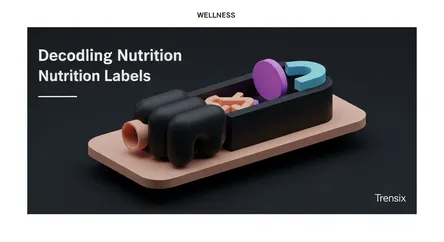Wellness
Decoding Nutrition Labels

Learn how to read and understand nutrition labels to make smarter, healthier food choices and take control of your diet.
What is it?
Reading nutrition labels is the skill of interpreting the information panel found on most packaged foods. This "Nutrition Facts" panel provides key details about the food's contents, including serving size, calories, and a breakdown of nutrients like fats, carbohydrates, sugars, protein, and sodium. It also lists ingredients in descending order by weight, helping to identify allergens or major components. The label includes a Percent Daily Value (%DV), which shows how much a nutrient in a serving contributes to a total daily 2,000-calorie diet.
Why is it trending?
With a rising focus on wellness and mindful eating, consumers are more eager to understand what is in their food. This trend is driven by a desire to manage specific health conditions, achieve fitness goals, and make informed dietary choices. Nutrition labels are the primary tool for comparing products, spotting hidden sugars or unhealthy fats, and verifying marketing claims. As health consciousness grows, the ability to quickly decipher this information has become an essential skill for anyone looking to control their diet and health.
How does it affect people?
Understanding nutrition labels empowers people to make choices that support their personal health goals. It helps them manage calorie intake, limit nutrients that can be harmful when overconsumed (like added sugars, sodium, and saturated fat), and increase beneficial nutrients like fiber and vitamins. For individuals with food allergies or health conditions like diabetes, reading labels is a critical tool for safety and managing their health effectively. This simple skill can lead to better weight management, a reduced risk of chronic diseases, and an overall healthier lifestyle.